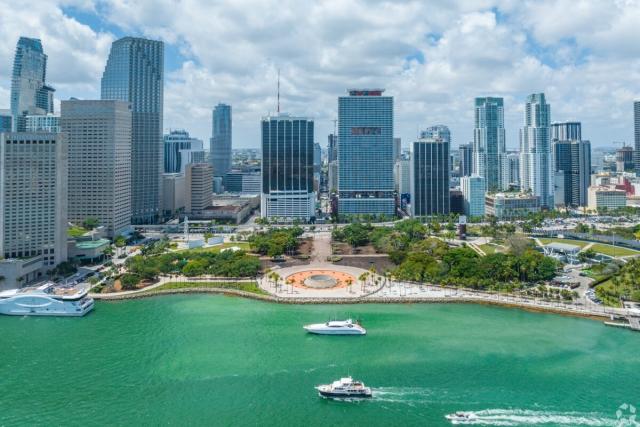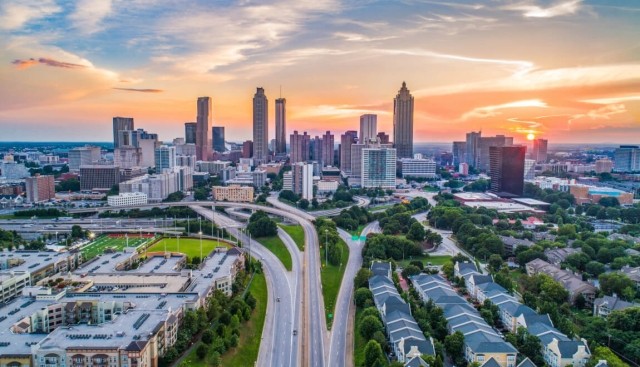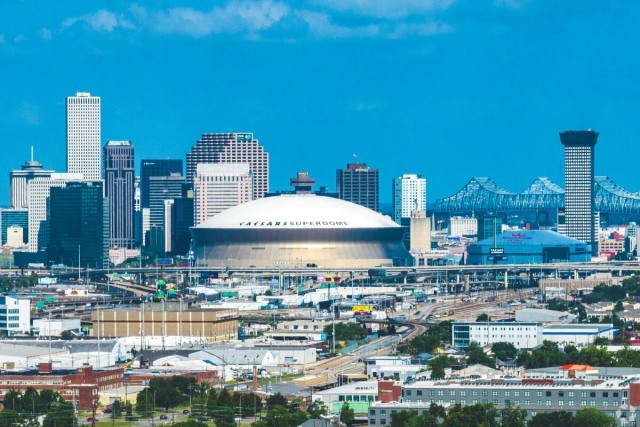What’s It Like to Live in Miami?
Living in Miami, Florida, is like being on a perpetual summer vacation, with its year-round warm climate and a community that thrives on diversity. Known for its sunny beaches and sleepless nightlife, Miami offers more than just a vacation hotspot; it’s a unique place to call home. The city is perfect for those who love the great outdoors, with endless opportunities for beach days, boating, and alfresco dining. Miami offers a lifestyle that’s as fast-paced or relaxed as you desire.
Facts to Know About Miami
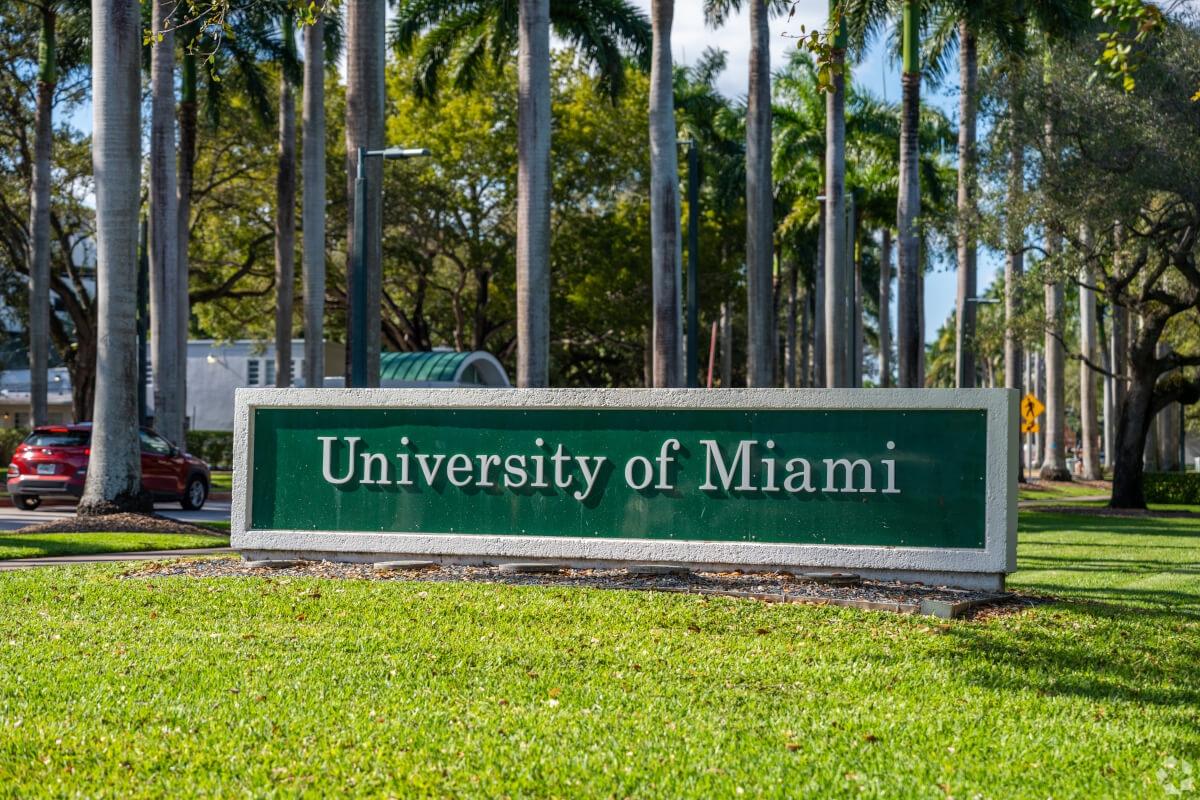
Miami, commonly called the Magic City due to how quickly it became a cultural phenomenon, is rooted in Cuban influences and its role as a gateway to the U.S., making it a melting pot of traditions and innovations.
- Population: Approximately 456,000 residents, according to the U.S. Census Bureau's 2023 estimates.
- Special landmarks: Vizcaya Museum & Gardens, Freedom Tower, the Biltmore, Cape Florida Lighthouse, Venetian Pool.
- Historic implications: According to the Library of Congress, Miami’s role as a gateway to the U.S. ramped up when Fidel Castro came to power in Cuba in 1959. Cubans began emigrating to the U.S. and settling in Miami, transforming the city culturally, politically, and socially.
- Universities: The University of Miami, Florida International University, and Miami Dade College are just three colleges in the Miami area. Educational institutions enrich the city’s culture and provide plenty of recreational opportunities.
The Pros and Cons of Living in Miami, FL
Pro: Cultural diversity

Thanks to its role as a gateway to Latin America, Miami has become a melting pot of cultures. Residents love experiencing the different cultures through restaurants and events that bring the city together.
A resident on Niche.com said, “I love the city’s mix of Latin American influences, which brings a lively energy to everything from the food to the music and festivals.”
Miami’s diversity also creates a sense of community among immigrants and descendants of immigrants. One resident said the unique mix of cultures “brings familiarity and comfort to immigrants.”
Another resident said, “I’ve lived in Miami my whole life. The city taught me to embrace my ethnicity and to continue learning about others.”
Con: Traffic congestion
Traffic is challenging in any big city, and Miami is no exception. Residents are frustrated with the combination of traffic congestion and a lack of investment in public transportation. While Miami-Dade County has a public transportation system, many residents find it lacking.
A resident said, “There’s not a good public transportation system here, so you definitely need a car to get around.”
Another resident said, “The city could benefit from more initiatives to make public transportation more efficient and accessible for everyone.”
Pro: Exciting nightlife

Along with its beautiful beaches, Miami is known for its nightlife. Miami’s nightlife scene has something for everyone, from exclusive nightclubs to casual dive bars. Bars and lounges are scattered across the city, but Downtown Miami and the Brickell neighborhood are hotspots.
Residents and visitors both love Miami’s nightlife scene. One resident said Miami has “legendary nightlife, particularly in South Beach, where the party rarely stops before dawn.”
Con: It gets crowded
Longtime residents find Miami crowded with tourists and new residents, which can be overwhelming. According to the U.S. Census Bureau, Miami’s population grew by 10.7% between 2010 and 2020, and Axios named Miami one of the fastest-growing major cities in the U.S.
Miami’s growing population can be frustrating for longtime residents. One Miami resident said, “Too many people are moving in. Traffic just keeps getting worse and worse by the day.”
Miami also has a robust tourism industry. The Greater Miami Convention & Visitors Bureau (GMCVB) reported that 27.2 million tourists visited Greater Miami and Miami Beach in 2023, following a steady growth. Heavy tourism seasons can be a burden on residents, so the City of Miami Beach announced its “breakup” with Spring Break in March.
Another resident said, “[Miami] gets crowded with tourists, which can be overwhelming at times.”
Pro: Great neighborhoods
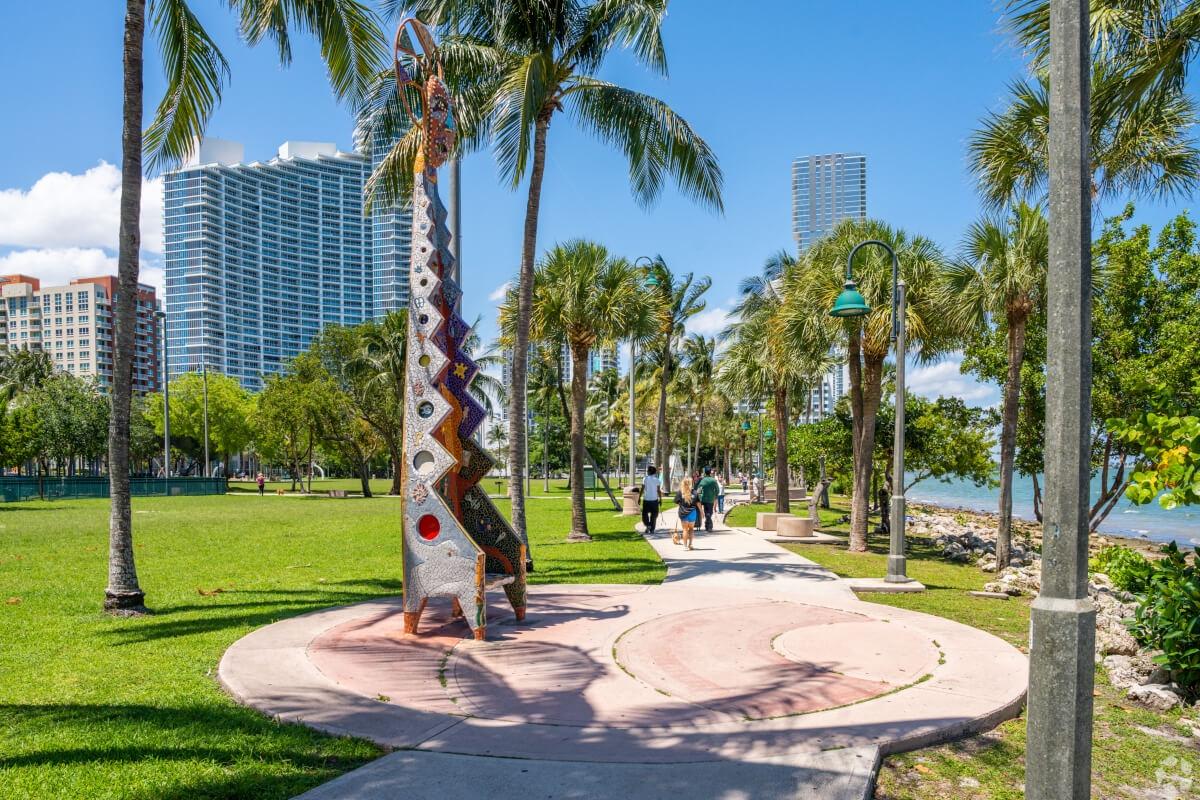
Miami neighborhoods are known for Spanish-inspired architecture, palm tree-lined streets, and a wide array of dining options. Places to live in Miami offer residents the best of urban and coastal living.
Three popular neighborhoods are:
- Edgewater: An up-and-coming luxury neighborhood along Biscayne Bay close to all the action.
- Miami Design District: A creative haven known for its abstract art and modern architecture.
- Wynwood: A trendy area a few miles inland with street art around every corner.
Con: High cost of living
With more people moving to the area comes a higher cost of living. Longtime residents have noticed a gradual increase in the cost of housing, groceries, and entertainment.
One resident said, “Miami offers a lot of food choices, nightlife, the beach, and other activities, although that comes at a high cost…the city proves to be very expensive, and the pay in the job market has not caught up.”
Pro: Beautiful beaches
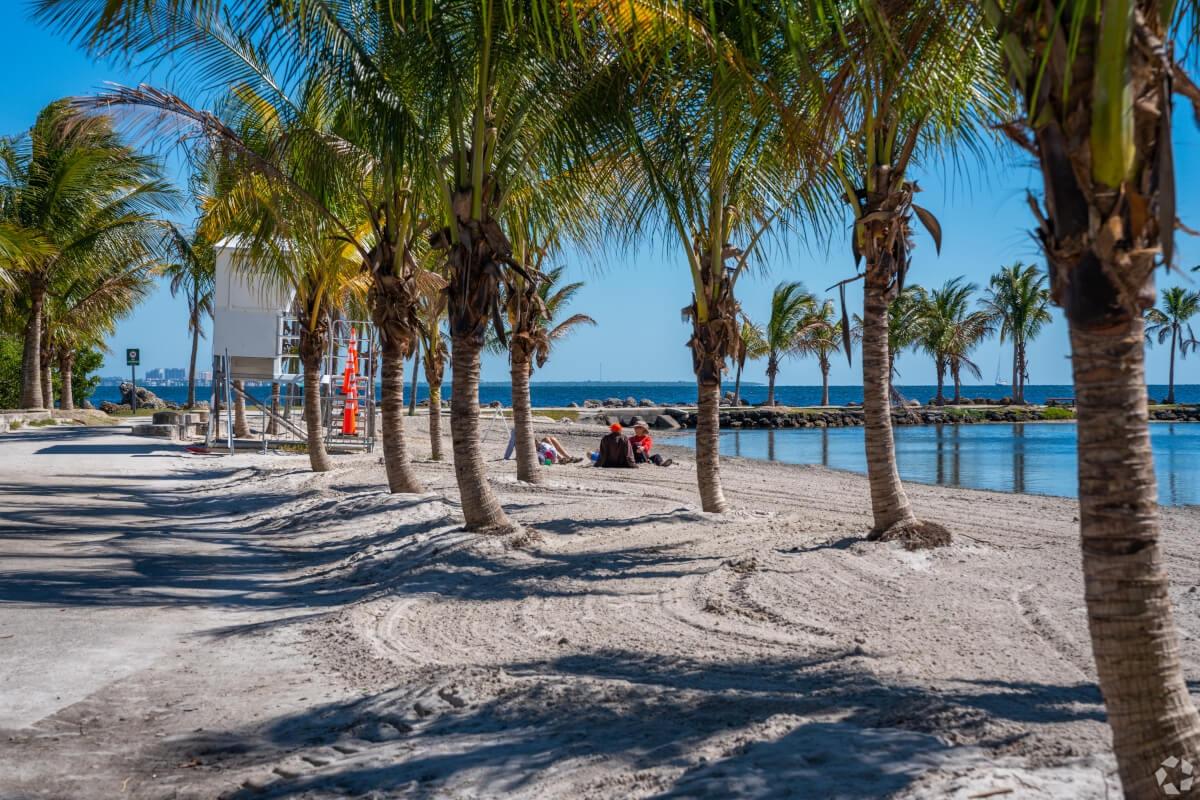
Miami’s beaches are its crown jewel. Beachgoers enjoy sunbathing on the sand, playing beach volleyball with friends, or taking a dip in the sparkling blue water.
Residents also enjoy warm weather all year, making it easy to enjoy the outdoors anytime. Between 2013 and 2023, Miami’s average summer temperature was 84.3 degrees Fahrenheit, and the average winter temperature was 72.1 degrees Fahrenheit.
One resident summed it up perfectly: “The beaches are incredible, and having year-round sunshine is definitely a plus.”
Things to Do in Miami
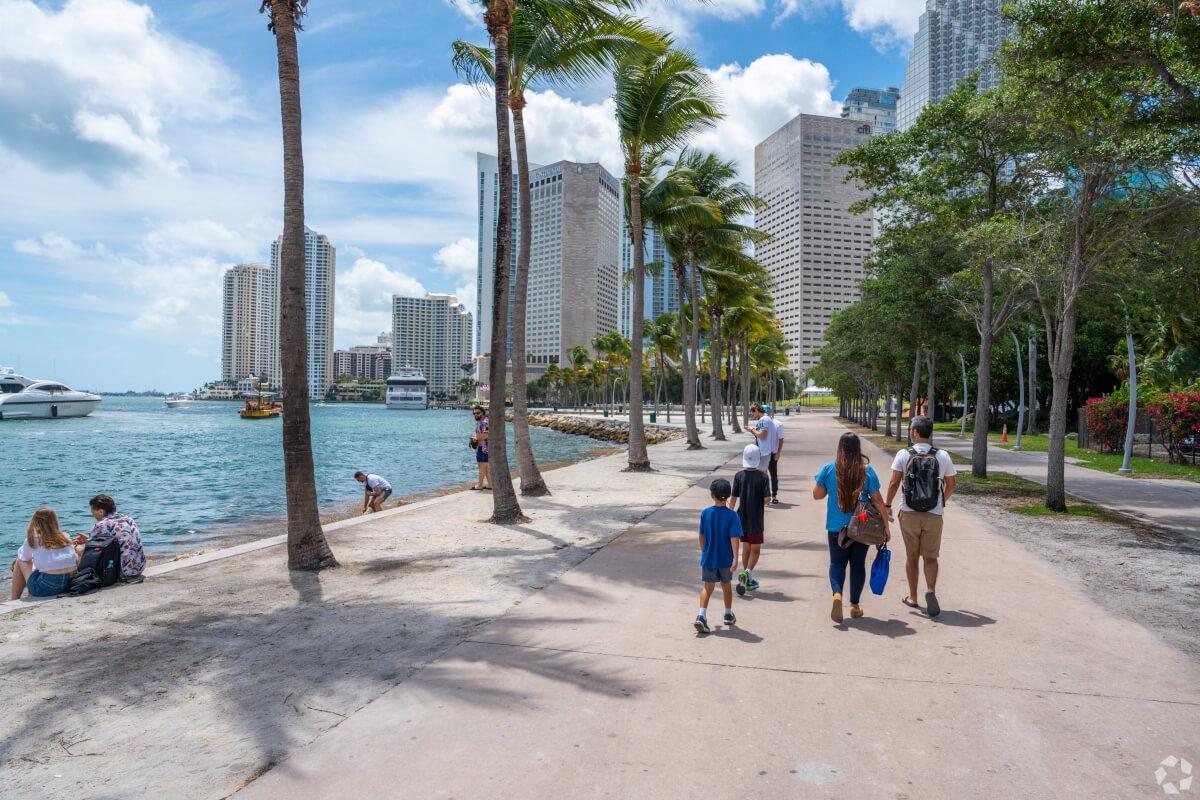
There’s always something going on in Miami, from beaches and parks to nightlife and festivals. However you want to spend your free time, Miami has something for you.
- Outdoor activities: Stroll through Bayfront Park for views of Biscayne Bay. Visit The Kampong National Tropical Botanical Garden to see tropical plants and experience the garden’s frequent community events. Miami’s various beaches provide the perfect setting for a day in the sun.
- Cultural attractions: Experience Cuban culture in the Little Havana neighborhood. Visit Zoo Miami to see hundreds of animals, or stroll through the Pérez Art Museum Miami to appreciate modern and contemporary art. Mark your calendar for Miami’s annual events like Art Deco Weekend and the Formula 1 Miami Grand Prix.
- Dining: Miami has a great food scene thanks to the diverse population. The city is known for its Caribbean cuisine, particularly from Cuba. Visit a local restaurant to try classic Latin American dishes like ropa vieja or mofongo.
Ready to make the move?
If Miami has caught your eye, take the next step with Apartments.com! Take a look at the most affordable neighborhoods in Miami, or use our customizable filters to narrow your search by price, amenities, and floor plan.
Wherever you are and wherever you’re going, Apartments.com has the tools to help you find the perfect place
This article was originally published on October 25, 2024, and has been updated to reflect apartment rent and cost of living data as of December 2025.
FAQs
Is Miami a good place to live?
Yes, Miami is a good place to live for those who want to live in a diverse area that’s warm year-round. Miami offers an urban lifestyle along the beach, but it’s important to be prepared for the higher cost of living.
Residents enjoy the dynamic lifestyle they experience in Miami. A current resident said, “Nightlife is lively, and there’s always something going on, from festivals to art events.”
What salary do you need to live in Miami?
According to our cost of living data, a comfortable salary for a single adult with no dependents to cover housing, utilities, groceries, and goods and services in Miami would be around $115,000 before tax.


